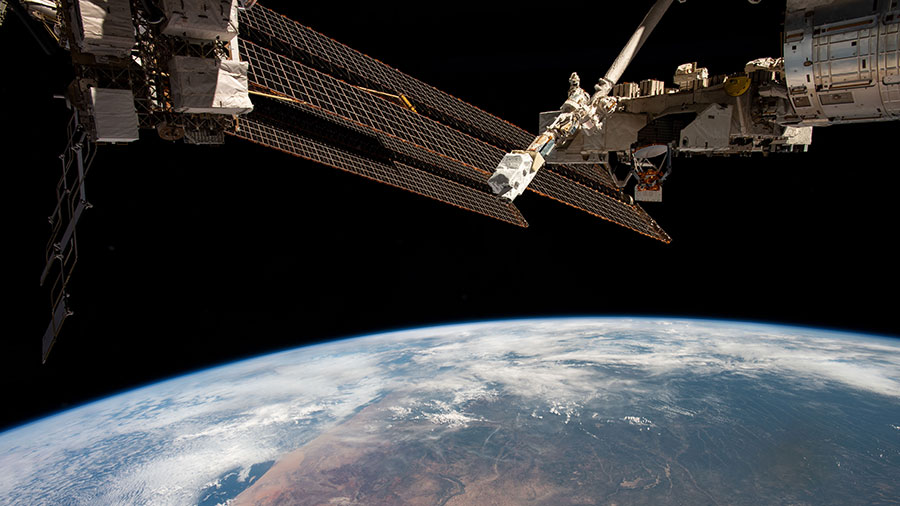Crew Studies Bone Growth, Space Physics and Works Eye Exams

Four Expedition 68 astronauts are midway through their bone research activities this week helping doctors improve treatment for bone conditions on and off the Earth. The three cosmonauts living aboard the International Space Station kept up their physics research, tested spacecraft communications gear, and conducted eye exams.
Weightlessness reveals phenomena that are difficult or impossible to study in Earth’s gravity environment. Scientists on the ground use the space station’s research facilities to study and observe this unique phenomena and provide advanced solutions benefiting a host of space and Earth-bound industries.
Four astronauts aboard the orbiting lab are in the middle of an experiment that is studying a bone graft adhesive that may reverse the effects of weightlessness on stem cells and bone tissue. Doctors have learned that microgravity inhibits bone tissue regeneration and are exploring ways to promote bone repair while living in space. Results may improve recovery from bone injuries during space missions and benefit therapies for conditions on Earth such as osteoporosis.
Flight Engineers Nicole Mann, Josh Cassada, and Frank Rubio from NASA and Flight Engineer Koichi Wakata of the Japan Aerospace Exploration Agency were in their second of three days of research operations for the Osteopromotive Bone Adhesive study. The quartet once again spent all day working in the Kibo laboratory module studying biological specimens inside the Life Science Glovebox. The samples are returned to Earth for evaluation and analysis and are compared to control samples on the ground maintained under similar conditions.
Commander Sergey Prokopyev continued his space physics research on Tuesday studying how clouds of highly charged particles, or plasma crystals, behave in a specialized chamber. This fundamental experiment may lead to more advanced research methods and improve practical knowledge for Earth and space industries.
Flight Engineer Dmitri Petelin spent Tuesday morning collecting station air samples for analysis from the Zvezda, Zarya, Nauka, and Destiny modules. Petelin later joined Prokopyev and tested the station’s tele-robotically operated rendezvous unit, or TORU, in coordination with the ISS Progress 81 cargo craft docked to Zvezda.
Flight Engineer Anna Kikina began her day with working on an oxygen generator and other life support components. Afterward, she joined Petelin for eye checks using medical imaging hardware to understand how living in space affects vision.
Learn more about station activities by following the space station blog, @space_station and @ISS_Research on Twitter, as well as the ISS Facebook and ISS Instagram accounts.
Get weekly video highlights at: https://roundupreads.jsc.nasa.gov/videupdate/
Get the latest from NASA delivered every week. Subscribe here: www.nasa.gov/subscribe
Mark Garcia
Powered by WPeMatico




